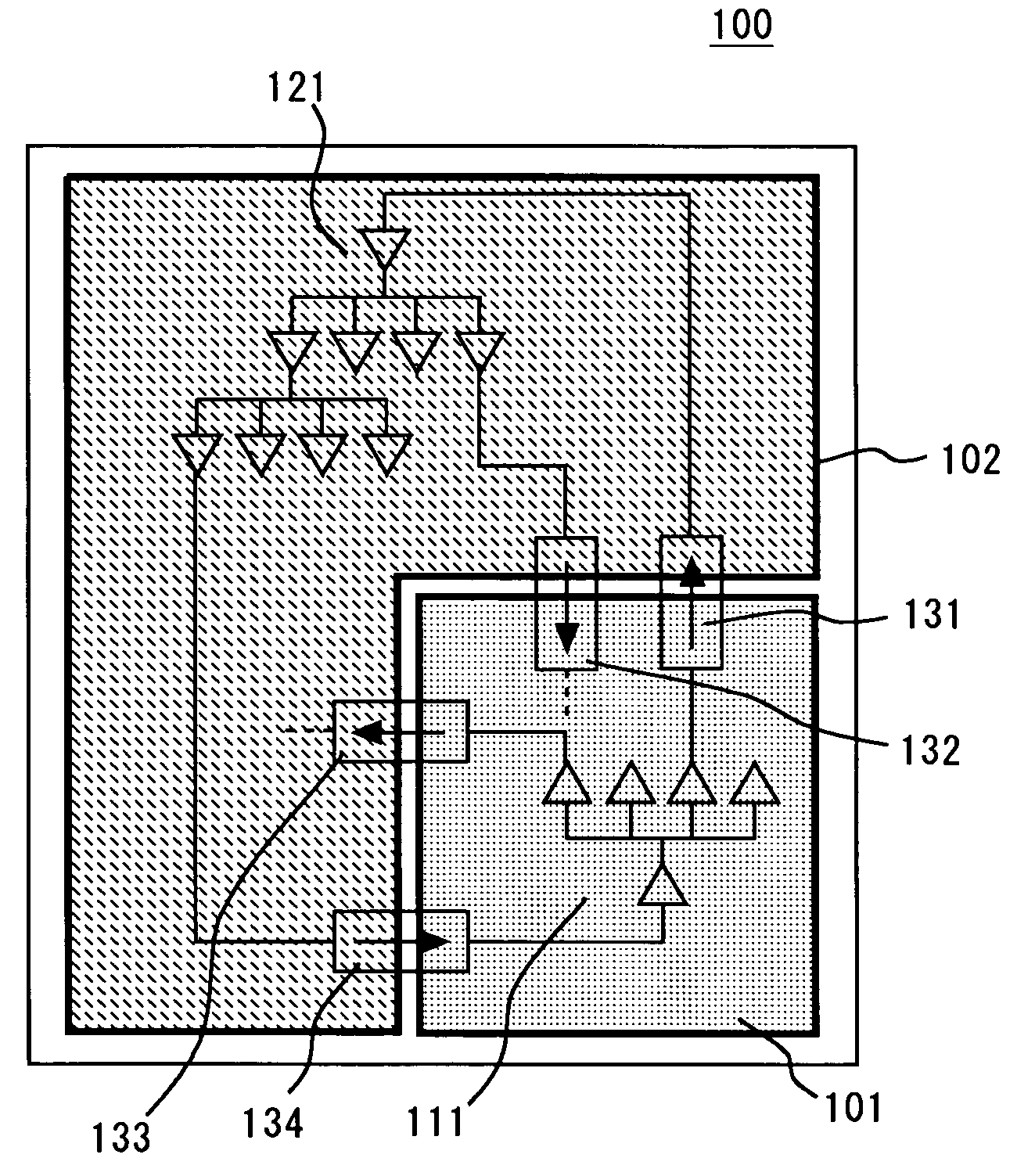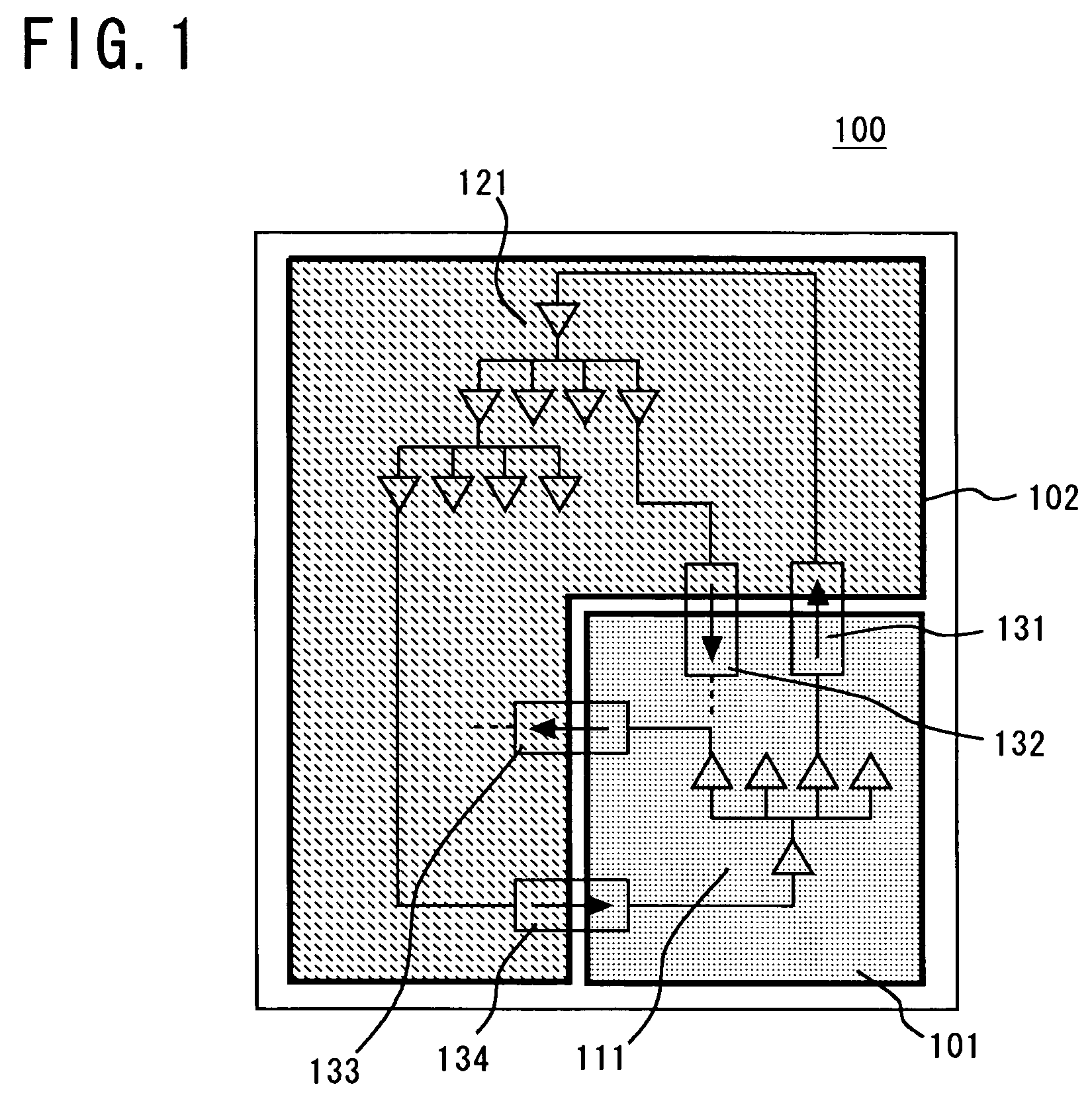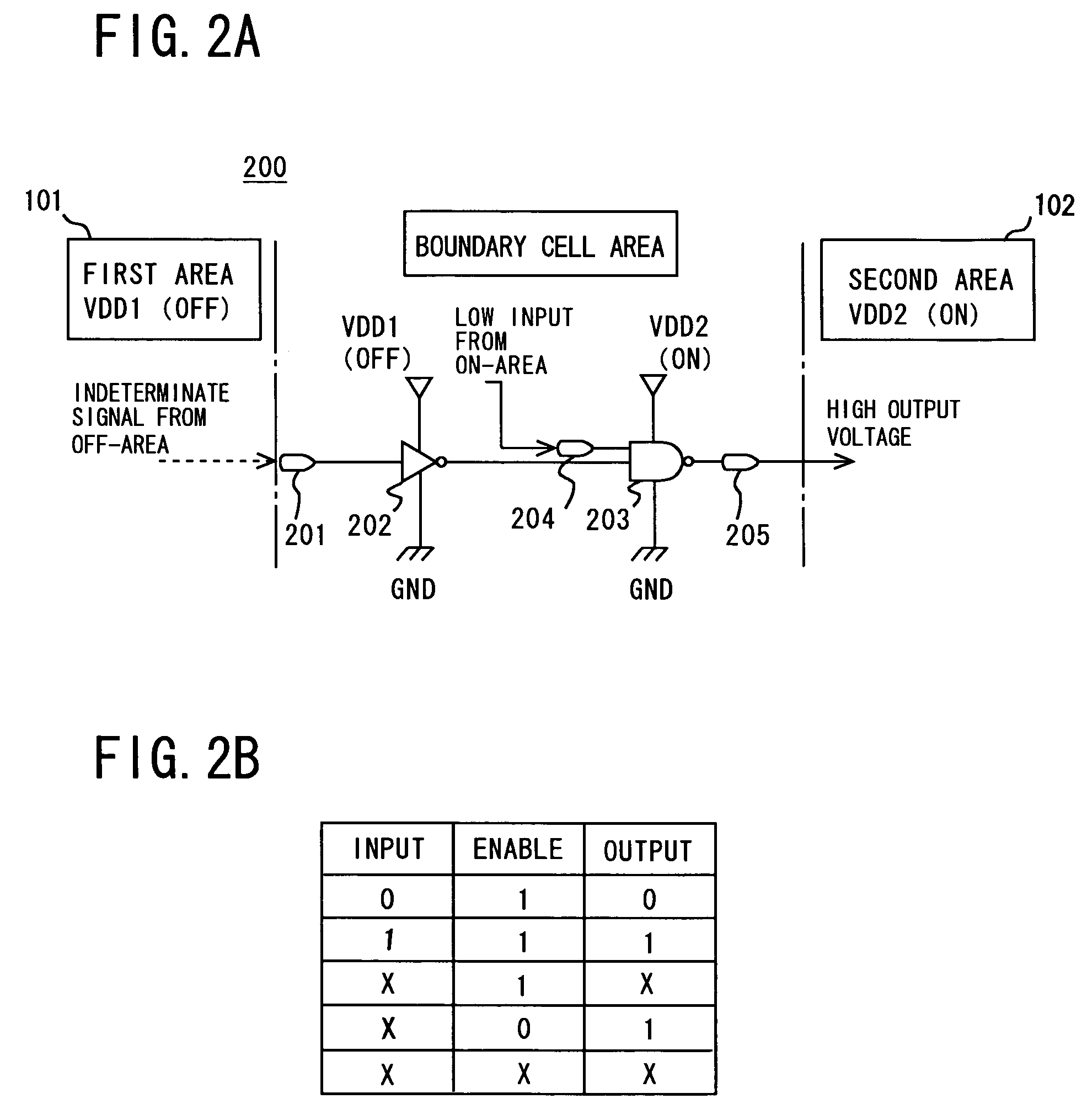Method for designing semiconductor circuit device, utilizing boundary cells between first and second circuits driven by different power supply systems
a technology of circuit devices and boundary cells, applied in the field of semiconductor circuit device design, can solve the problems of inability to perform efficient circuit design, inability to control line length, and inability to design circuits in different power systems, and achieve the effect of easy design of semiconductor devices
- Summary
- Abstract
- Description
- Claims
- Application Information
AI Technical Summary
Benefits of technology
Problems solved by technology
Method used
Image
Examples
Embodiment Construction
[0032]Preferred embodiments of the present invention will be explained hereinafter with reference to the accompanying drawings.
[0033]Referring first to FIG. 1, a chip image view showing the schematic structure of a semiconductor circuit device 100 according to an embodiment of this invention is shown. The semiconductor circuit device 100 includes a plurality of circuit areas where voltages are supplied by different power systems. FIG. 1 shows a first circuit area 101 operating by a first power system and a second circuit area 102 operating by a second power system. The first and second circuit areas may be viewed as electrical circuits. VDD 1 is supplied as a power supply voltage to the first circuit area, and VDD 2 is supplied as a power supply voltage to the second circuit area. The VDD 1 and VDD 2 may be at the same or different potential levels. These two voltages may be controlled separately.
[0034]A typical chip in this embodiment may be used for mobile devices such as cellular...
PUM
 Login to View More
Login to View More Abstract
Description
Claims
Application Information
 Login to View More
Login to View More - R&D
- Intellectual Property
- Life Sciences
- Materials
- Tech Scout
- Unparalleled Data Quality
- Higher Quality Content
- 60% Fewer Hallucinations
Browse by: Latest US Patents, China's latest patents, Technical Efficacy Thesaurus, Application Domain, Technology Topic, Popular Technical Reports.
© 2025 PatSnap. All rights reserved.Legal|Privacy policy|Modern Slavery Act Transparency Statement|Sitemap|About US| Contact US: help@patsnap.com



